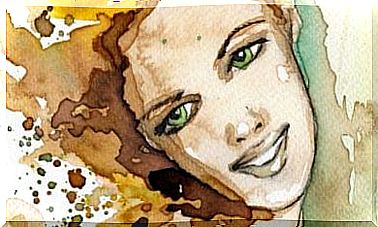5 First Symptoms Of Anxiety That Go Unnoticed

Often the first symptoms of anxiety go unnoticed because they are subtle. The symptoms may seem as if they have nothing to do with anxiety. Neuroscientists have found that these signals appear early and serve as a warning of what is going on in our brains.
Once fear has established itself, the predominant feelings are insecurity, terror, and a kind of deep inner abyss. With anxiety come physical, psychological, cognitive and emotional symptoms. Therefore, anxiety is a complex condition from which it is difficult to escape.
With all these problems, the sooner fear is detected, the sooner it will be possible to intervene. You will have a greater chance of overcoming it. That is why it is important to be alert to the first symptoms of anxiety. Here are five:
Cold feet, one of the first symptoms of anxiety
The temperature of your feet can be an indicator of your emotional state. One of the first symptoms of anxiety can be cold feet, recurrent and without physiological reasons to explain it. Why are cold feet considered a symptom of anxiety? How are cold feet correlated with anxiety?
This phenomenon happens when a human feels threatened. The organs close to your torso get increased blood flow. In short, towards the heart and digestive system. This is the body’s way of responding to danger. When this happens, the limbs, especially the feet, have less blood flow. Therefore, the temperature drops.

Continuous yawning
Another early symptom of anxiety is yawning more often than usual. A study from the University of Bournemouth in England confirms this. According to the research, people in a state of fear or panic tend to yawn more often.
The study revealed that there is a direct relationship between the number of yawns and the production of cortisol, the stress hormone. The more you yawn, the more cortisol is produced. This is because cortisol raises body temperature. The yawn, on the other hand, lowers the temperature.
brain fog
Brain fog is a condition that makes it difficult to concentrate. We experience it as a kind of unreality. Those who suffer from brain fog have trouble connecting to the present moment and bringing thoughts together easily.
Brain fog is also called “fibromyelin” and can be one of the first symptoms of anxiety. When you have brain fog, there are so many ideas in your head that a kind of veil crowds your mind. That’s why it’s so hard to draw attention.

Recurring nightmares
We’ve all had nightmares at some point. This phenomenon may be related to situations that we have experienced that have touched us deeply. We may not have finished processing these situations and they return in our sleep. However, when this returns, it can be an expression of hidden fear.
Dreams, especially nightmares, can be an expression of our subconscious. We may not openly think about these situations during the day, but they unconsciously take over our lives. Nightmares can therefore be a clear sign of incipient anxiety.
Metallic taste in the mouth.
The University of Bristol (United Kingdom) has conducted a study on anxiety. Researchers found that anxious people tend to have a sharper perception of salty and bitter tastes. In addition, it has been established that one of the first symptoms of anxiety is an unpleasant metallic taste in the mouth.

This is because fear is a potentially strong emotion that encourages the spread of oral bacteria in some people. This, in turn, leads to bleeding gums. However, this can be very minor and therefore often not visible to the naked eye. It feels like the metallic taste of blood in the mouth.
Anxiety, like other mental illnesses, translates into pattern-creating behavior. Without realizing it, we learn these patterns and start repeating them. In other words, we learn and adopt those fearful behaviors. When that happens, leaving the circle of fear becomes challenging and complicated.
Therefore, it is very important to maintain an attitude of self-observation. Detect changes, new symptoms, no matter how small. If we can identify the fear in the early stages, we will be in a better position to face it.









